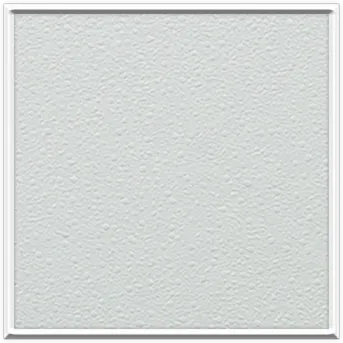Nov . 08, 2024 07:16 Back to list
Alternatives to Ceiling Grid Tees for Effective Architectural Solutions
The Versatility of Ceiling Grid Tees An Essential Element in Modern Architecture
In the realm of contemporary architecture and interior design, aesthetic appeal and functionality are pivotal. One of the most significant yet often overlooked components that contributes to both aspects is the ceiling grid tee. These integral elements form the framework for suspended ceilings, providing not only structural support but also a canvas for creativity in design. This article delves into the features, benefits, and applications of ceiling grid tees, illustrating their importance in modern construction.
What Are Ceiling Grid Tees?
Ceiling grid tees are T-shaped metal or PVC components that create a framework to support suspended ceilings. They connect to one another, forming a grid pattern that allows for the insertion of ceiling tiles or panels. The main components of a ceiling grid system include main tees, cross tees, and angle trims, which together create a robust support structure. While the standard materials are metal, particularly galvanized steel, advancements in coatings and treatments have expanded options to include lightweight and rust-resistant elements.
Key Benefits of Ceiling Grid Tees
1. Structural Support The primary function of ceiling grid tees is to provide a stable framework for suspended ceiling tiles. This enhances safety by ensuring that the tiles remain secured and can support the additional weight of lighting fixtures or HVAC systems.
2. Design Flexibility One of the strengths of ceiling grid systems lies in their flexibility. Designers can create various ceiling heights and shapes, allowing for increased creativity in space utilization. Whether it's a minimalist design or something more ornate, ceiling grid tees can be configured to meet the aesthetic needs of any space.
3. Acoustic Control In office settings and public spaces, noise can often be an issue. Many ceiling tiles used in conjunction with grid tees are designed to absorb sound, creating a more pleasant and productive environment. By choosing the right combination of grid tees and acoustic tiles, designers can significantly improve a room's acoustical quality.
4. Easy Maintenance Access One significant advantage of suspended ceilings supported by grid tees is the ease of access to wiring, plumbing, and other mechanical systems installed above the ceiling. This facilitates quick repairs and maintenance, reducing downtime and disruption in work environments.
ceiling grid tees

5. Energy Efficiency Properly designed suspended ceilings contribute to energy efficiency. They can help control indoor temperature by serving as an additional layer of insulation. Additionally, this allows for better positioning of lighting and HVAC systems, enhancing overall energy management in a building.
Applications of Ceiling Grid Tees
Ceiling grid tees are widely utilized across various sectors, showcasing their versatility.
- Commercial Spaces In offices, retail spaces, and educational institutions, grid tees offer a streamlined method for integrating lighting and technology while simultaneously addressing acoustic concerns. The ability to easily replace or rearrange ceiling tiles encourages adaptability in dynamic environments.
- Healthcare Facilities In hospitals and clinics, ceiling grid tees support a meticulous design that often includes integrated lighting and medical equipment while maintaining hygiene. The lightweight, non-porous nature of ceiling tiles in these settings enhances maintenance protocols and infection control measures.
- Residential Areas Homeowners seeking to modernize their living spaces often turn to suspended ceilings with grid tees. This approach not only adds a contemporary touch but also allows for creative lighting solutions and the hiding of unsightly pipes or ductwork.
- Industrial Settings Manufacturing and warehouse facilities benefit from the high durability of metal grid tees, which can withstand harsher conditions and heavy installations. Their utility in providing overhead space for ventilation and lighting configurations is crucial in such environments.
Conclusion
Ceiling grid tees are indispensable in the architectural toolkit, enhancing both the functionality and visual appeal of spaces. As the demand for innovative, flexible, and efficient design continues to grow, the significance of these humble yet powerful components remains unchallenged. By investing in high-quality ceiling grid systems, architects and designers pave the way for creative solutions that respond to the diverse needs of modern living and working spaces. In essence, ceiling grid tees not only support ceilings; they support the very essence of architectural design and innovation in our built environments.
-
Quality Ceiling Trap Doors & Access Panels | Easy & Secure AccessNewsAug.30,2025
-
Durable Ceiling T Grid Systems | Easy InstallationNewsAug.29,2025
-
PVC Gypsum Ceiling: Durable, Laminated Tiles for Modern SpacesNewsAug.28,2025
-
Pvc Gypsum Ceiling Is DurableNewsAug.21,2025
-
Mineral Fiber Board Is DurableNewsAug.21,2025
-
Ceiling Tile Clip Reusable DesignNewsAug.21,2025







